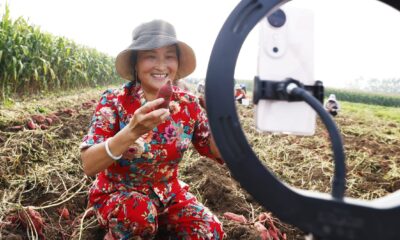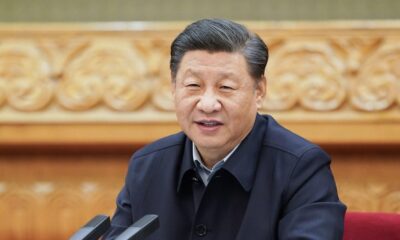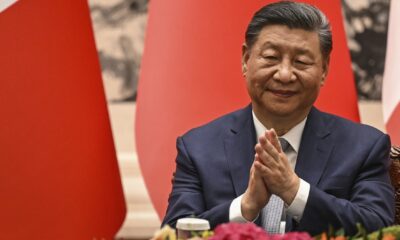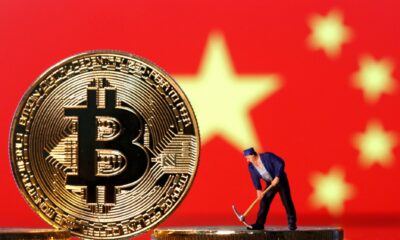China
Putin and Xi: Beijing Belt and Road meeting highlighted Russia’s role as China’s junior partner
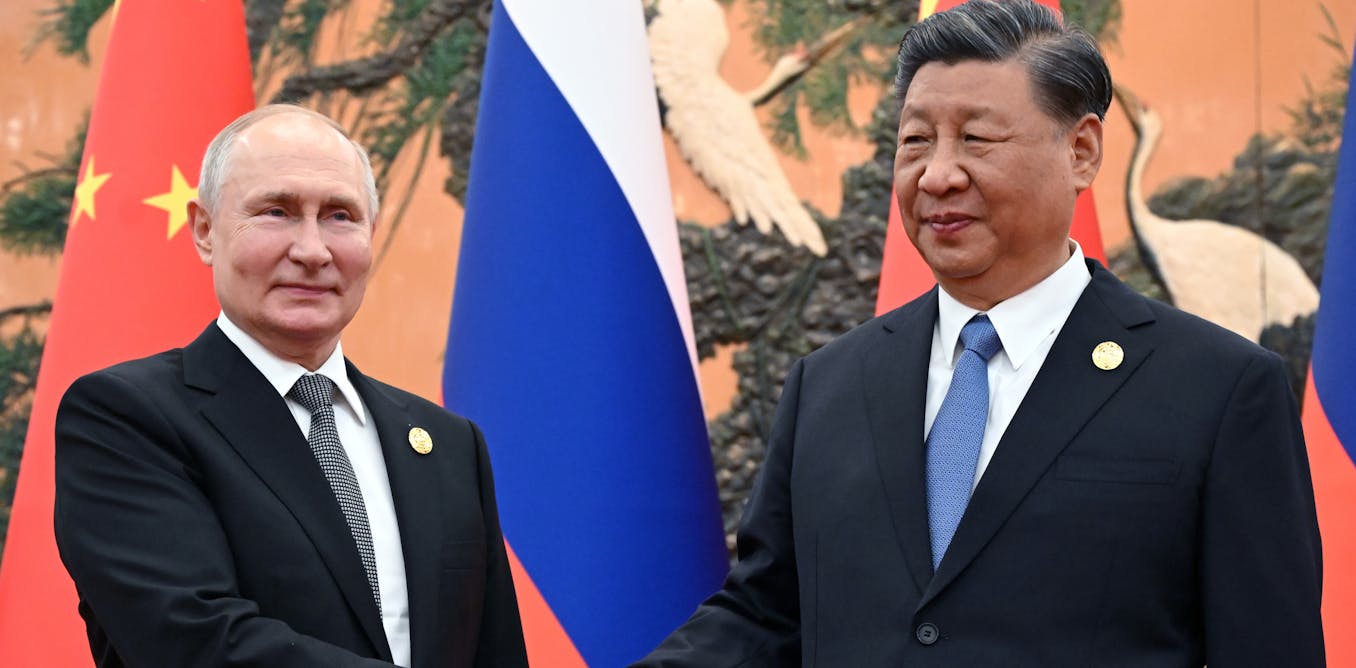
The recent Belt and Road Forum in Beijing saw decreased attendance from world leaders, highlighting geopolitical tensions. Vladimir Putin emphasized Sino-Russian cooperation, but trade imbalances reveal Russia’s subordinate role.
The third Belt and Road Forum held in Beijing recently attracted fewer heads of state or senior officials than the previous forums in 2017 and 2019. There were 11 European presidents and prime ministers at the 2019 forum. But last week’s forum attracted only three.
This is understandable, given that the two-day meeting took place against the backdrop of high tension in the Middle East caused by the conflict between Israel and Hamas as well as the war in Ukraine – both wars which have highlighted differences in views on regional and global order between the west and a number of non-western countries.
One enthusiastic participant was the Russian president, Vladimir Putin. For Putin, the forum provided an opportunity to meet other leaders without fear of arrest, given his indictment by the International Criminal Court for war crimes which had kept him away from September’s Brics summit in South Africa.
While Putin was just one among 20 or so world leaders at the Forum, he was photographed at Xi Jinping’s right hand and given a prominent place in proceedings. Delivering a speech at the forum immediately after the Chinese president and staging a press conference for the Russian media before boarding the plane to Moscow, Putin attempted to convey the message of tight cooperation with China.
He was keen to remind his audience of Russia’s credentials as a UN security council member, together with China, responsible for the maintenance of international peace and security. He also noted that he and Xi had discussed both the situation in Gaza and the events in Ukraine, describing these situations as “common threats” which strengthen Sino-Russian “interaction”.
Putin drew particular attention to the high bilateral trade volume between Russia and China, which has reached nearly US$200 billion (£163 billion). This sounds impressive until you remember that the bulk of this trade consists of export of Russian hydrocarbons and other raw materials to China. This is nothing new – in fact trade in hydrocarbons between Russia and China have been boosted by western sanctions.
Perhaps the most instructive aspect of the visit was Putin’s explicit acknowledgement of the different roles played by Moscow and Beijing in international politics. Putin described the Russia-dominated Greater Eurasian Partnership (GEP) – a concept Moscow has promoted as a response to the Belt and Road Initiative (BRI) that would fuse the Eurasian Economic Union with the BRI – as a regional or “local” project. Meanwhile he happily described the BRI as “global” in scale.
For the past decade, Russian policymakers and experts have consistently held up the GEP as symbolising Russia’s equality with China. Russian foreign minister Sergei Lavrov has described it as “the creation of a continent-wide architecture”.
Putin’s words, coupled with the lack of any meaningful results of the meeting (bar a contract on food and agricultural products which has yet to be confirmed by Beijing), illustrate the extent to which Russia’s war against Ukraine has deepened the asymmetry between the two powers.
Holding back?
The lack of genuine progress on the issue of the Power of Siberia-2 pipeline, which will transport gas from Russia’s Yamal gas fields, which used to supply Europe, via Mongolia to China, was further evidence of this asymmetry. Xi was kind enough to express hope that the project could proceed quickly. But he did not outline any concrete steps in that direction.
China’s agreement, if confirmed by a contract, would have been the most clear signal of Beijing’s strategic support for Russia, especially given Gazprom’s shrinking European market. By prolonging negotiations, China seems to be trying to extract specific concessions from Russia, related to the price of gas, possible Chinese ownership of gas fields in Russia, or Beijing’s acquisition of shares in Gazprom.
Meanwhile, in May 2023, China revived the prospect of building the so-called section “D”, enlarging the capacity of the Central Asia-China gas pipeline system, which will bring gas from Turkmenistan via Kyrgyzstan and Tajikistan to China, emphasising China’s other sources of energy supplies.
While continuing to offer Moscow political support and not interfering with Chinese companies’ attempts to take advantage of the exodus of western companies to increase their presence in the Russian market, Beijing has clearly attempted to prevent any embarrassment related to Russia. A gas contract would have overshadowed the BRI summit and generated a strong reaction in the US and Europe, potentially strengthening China hawks in the west.
Beijing making its move
Putin’s delegation was full of ministers and CEOs of key Russian enterprises, from Rosneft and Gazprom to Novatek, so the conclusion of commercial agreements can’t be ruled out, but the probability is low. It is clear that Beijing does not want to be seen to be openly supporting Russia in resisting and bypassing western sanctions.
In the 1990s, Russian officials regularly warned of the dangers of becoming a “raw materials appendage” to China. Today the economic benefits that Russian elites gain from hydrocarbons mean this danger has now become a reality. Russia has locked itself into an economic partnership in which it is the supplicant, a role that Moscow seems happy to play.
But the BRI is not just about economics. It is also a key part of Beijing’s bid to project itself as a “global responsible power”. Beijing has recently outlined what it calls its “Global Security Initiative” which explicitly rejects the Western rules-based order. This comes alongside a “Global Development Initiative” and, nested within these, a “Global Civilisation initiative”. Taken together these question western universalist ideas about human rights and democracy.
China’s thinking has gained traction among many countries of the global south, providing a developmental path without lectures on human rights. China speaks to these countries using its dual identity as both a rapidly developing power and a member of the UN security council. By comparison, notwithstanding its security council position, Russia has few tangible benefits to offer these countries. Last week’s BRI forum has driven this point home.
This article is republished from The Conversation under a Creative Commons license. Read the original article.
Business
BRICS: China Classifies Crypto as Property and Prohibits Business Ownership
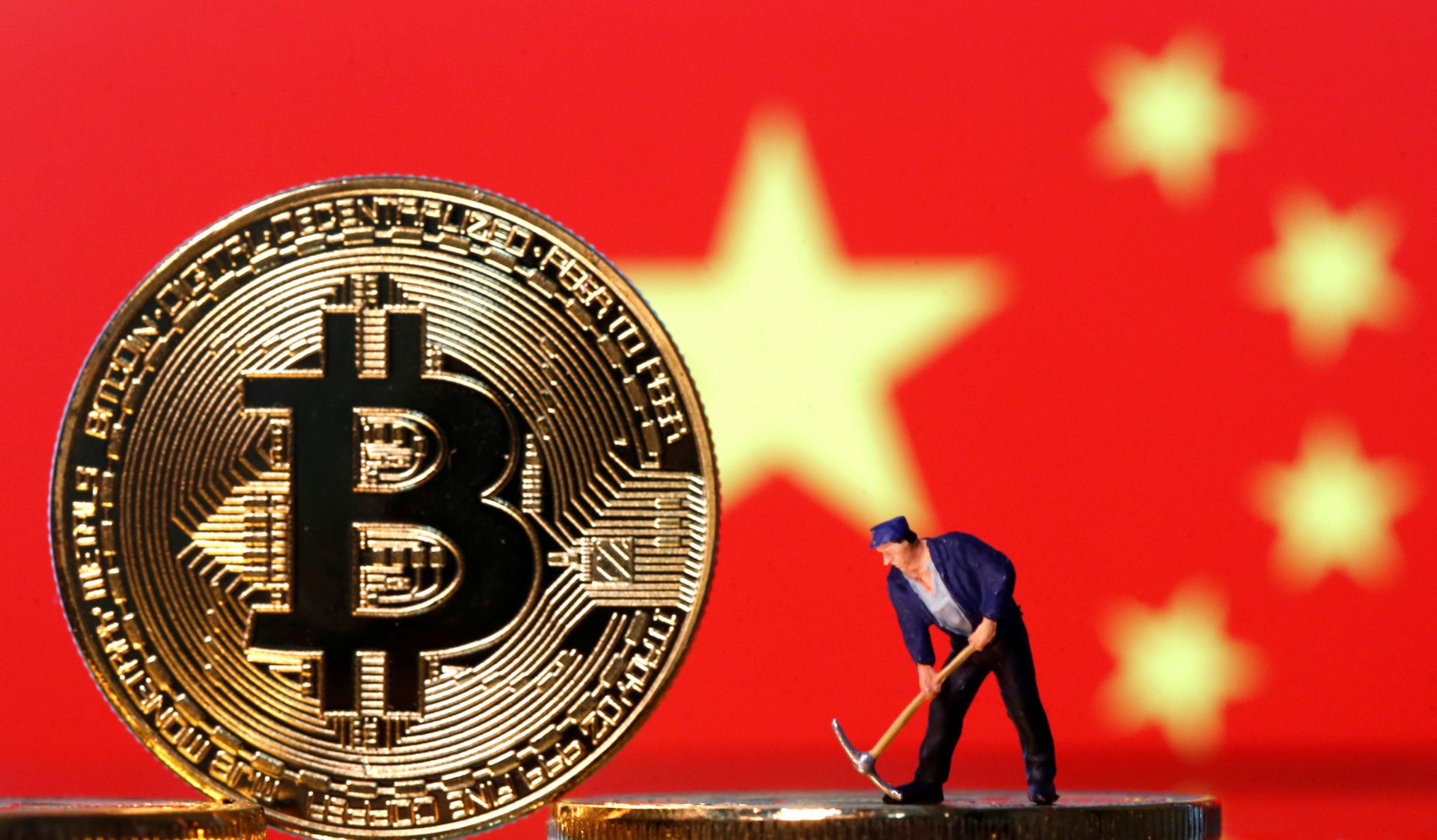
China’s Shanghai court ruled cryptocurrencies are property, boosting optimism in the crypto industry while maintaining a ban on business transactions. This may signal a shift in future regulations.
China’s Ruling on Cryptocurrency
In a pivotal decision for the nation and its BRICS alliance, China has officially classified cryptocurrency as property while maintaining prohibitions against business transactions involving digital assets. A notable ruling from the Shanghai Songjiant People’s Court affirmed cryptocurrencies as property, sparking optimism within the crypto industry regarding future regulations.
Implications for the Crypto Industry
As cryptocurrencies gain significance globally, the Chinese ruling is viewed as a potential-positive shift amidst ongoing restrictions. While individuals can hold virtual currency, businesses remain barred from engaging in investment transactions or issuing tokens independently. This decision has generated anticipation for more accommodating regulations in the future.
Future Prospects for Cryptocurrency in China
Experts like Max Keiser believe this ruling indicates China’s growing acknowledgment of Bitcoin’s influence. As BRICS nations explore increased cryptocurrency utilization in trade, this legal shift could enhance market demand and lead to greater acceptance of cryptocurrencies as a legitimate asset class, setting the stage for potential developments in 2025.
Source : BRICS: China Rules Crypto as Property, Bars Business Holdings
China
Digital Taxation in China: Effects on Corporate Tax Risk Management and Compliance Strategies

Tax digitalization in China enhances efficiency and accuracy in tax administration through AI and technology. Significant advancements include online services, e-invoicing, and data integration, improving risk management. The government targets further reforms by 2025 to establish a robust intelligent taxation system.
Tax digitalization, also known as “digitalized tax administration” or “tax administration by data,” is gaining momentum in China. Enabled by digital technologies and artificial intelligence, Chinese tax authorities have significantly improved the efficiency and accuracy of tax administration. As a result, tax risks are now easier to identify, and tax audits have become more focused and targeted.
The Chinese tax bureau has made significant efforts to advance tax administration through digital upgrades and intelligent transformation. By utilizing modern information technology, the tax authorities have established platforms such as the electronic tax bureau, which enables online processing of tax registration, filing, and payments. Additionally, the promotion of electronic invoicing and the Golden Tax IV system has improved the efficiency and accuracy of tax administration.
This digital landscape allows tax authorities to integrate data from various sources, including invoices, banking information, business records, and customs data. Such integration facilitates more accurate identification of potential tax risks.
This article explores the impact of tax digitalization on businesses in China, emphasizing the evolving dynamics of tax risk management, particularly regarding data supervision.
At the opening ceremony of the 5th Belt and Road Initiative Tax Administration Cooperation Forum on September 24, 2024, Hu Jinglin, Commissioner of the State Taxation Administration (STA) of China, delivered a speech outlining the efforts of Chinese tax authorities to enhance tax administration and efficiency. He emphasized the importance of advancing tax governance through data, highlighting the STA’s commitment to leveraging data and algorithms for intelligent tax management.
Currently, a pilot program for fully digitalized electronic invoices (e-fapiao) has been expanded nationwide, alongside the launch of a unified electronic tax bureau. Additionally, a smart office platform for tax personnel is under development. These systems aim to provide intelligent services for taxpayers and enable tax officers to deliver differentiated and precise services based on dynamic credit risk assessments.
Furthermore, according to a document released by the General Office of the CPC Central Committee and General Office of the State Council in 2021, titled “Opinions on Further Deepening the Reform of Tax Collection and Administration,” China aims to achieve significant progress by 2025 in reforming its tax administration system. In particular, it aims to establish a robust and intelligent taxation framework and develop a first-class intelligent administrative application system, thereby improving tax law enforcement, service, and regulatory capabilities.
| This article was first published by China Briefing , which is produced by Dezan Shira & Associates. The firm assists foreign investors throughout Asia from offices across the world, including in in China, Hong Kong, Vietnam, Singapore, and India . Readers may write to info@dezshira.com for more support. |
Read the rest of the original article.
China
Farms to fame: How China’s rural influencers are redefining country life
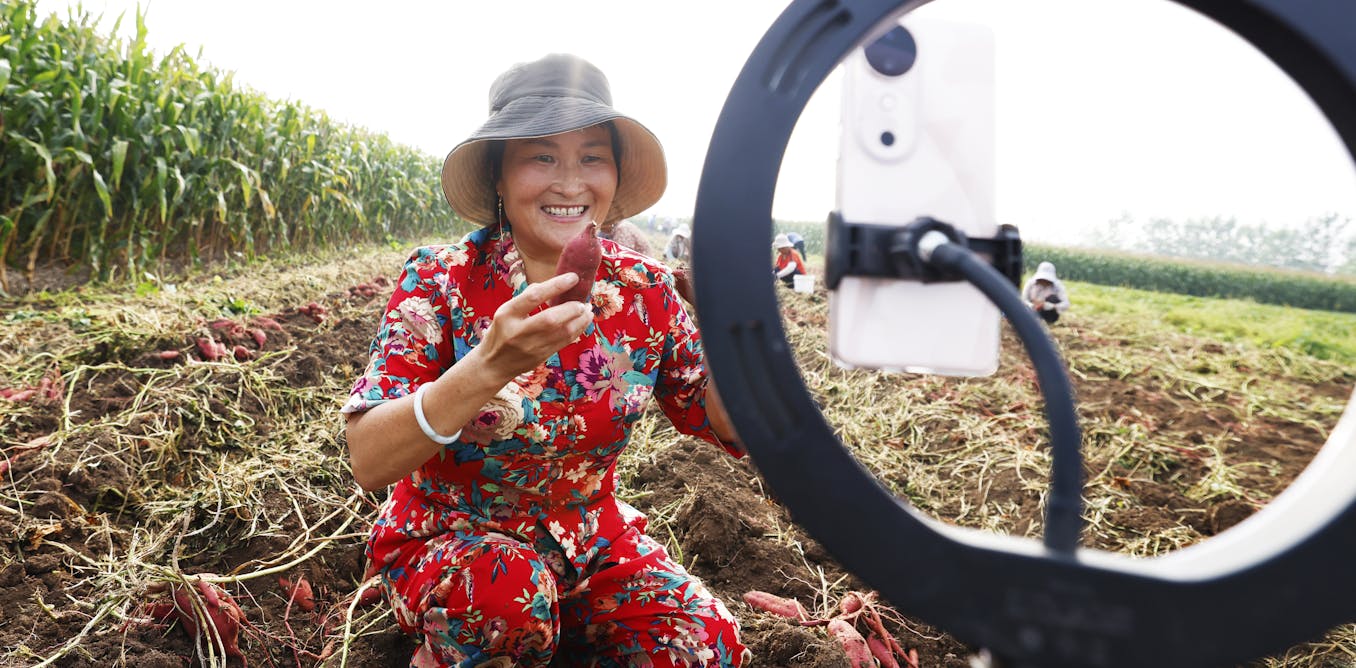
In Yunnan, influencer Dianxi Xiaoge redefines rural China’s image, showcasing pastoral life, bridging cultural gaps between urbanites and rural communities, and sparking interest through nostalgic content and government support.
In the quiet backwaters of Yunnan, Dong Meihua – though her followers know her by the public alias Dianxi Xiaoge – has done something remarkable: She’s taken the pastoral simplicity of rural China and made it irresistible to millions. In her hands, a village kitchen becomes a stage, and the rhythms of farm life become a story as compelling as any novel. She is one of many rural influencers returning to their roots.
In a digital revolution turning established narratives on their head, China’s countryside is emerging as an unlikely epicenter of viral content. Xiaoge is one of thousands of influencers redefining through social media how the countryside is perceived.
Upending preconceptions of rural China as a hinterland of poverty and stagnation, this new breed of social media mavens is serving up a feast of bucolic bliss to millions of urbanites. It is a narrative shift encouraged by authorities; the Chinese government has given its blessing to influencers promoting picturesque rural images. Doing so helps downplay urban-rural chasms and stoke national pride. It also fits nicely with Beijing’s rural revitalization strategy.
Hardship to revival
To fully appreciate any phenomenon, it’s necessary to first consider the historical context. For decades, China’s countryside was synonymous with hardship and backwardness. The Great Leap Forward of the late 1950s and early 1960s – Communist China’s revered founder Mao Zedong’s disastrous attempt to industrialize a largely agrarian country – devastated rural communities and led to widespread famine that saw tens of millions die.
The subsequent Cultural Revolution, in which Mao strengthened his grip on power through a broad purge of the nation’s intelligentsia, further disrupted customary rural life as educated youth were sent to the countryside for “reeducation.” These traumatic events inflicted deep scars on the rural psyche and economy.
Meanwhile, the “hukou” system, which since the late 1950s has tied social benefits to a person’s birthplace and divided citizens into “agricultural ” and “nonagricultural” residency status, has created a stark divide between urban and rural citizens.
The reform era of Mao’s successor, Deng Xiaoping, beginning in 1978, brought new challenges. As China’s cities boomed, the countryside lagged behind.
Millions of rural Chinese have migrated to cities for better opportunities, abandoning aging populations and hollowed-out communities. In 1980, 19% of China’s population lived in urban areas. By 2023, that figure had risen to 66%.
Government policies have since developed extensively toward rural areas. The abolition of agricultural taxes in 2006 heralded a major milestone, demonstrating a renewed commitment to rural prosperity. Most recently, President Xi Jinping’s “rural revitalization” has put countryside development at the forefront of national policy. The launch of the Internet Plus Agriculture initiative and investment in rural e-commerce platforms such as Taobao Villages allow isolated farming communities to connect to urban markets.
Notwithstanding these efforts, China’s urban-rural income gap remains substantial, with the average annual per capita disposable income of rural households standing at 21,691 yuan (about US$3,100), approximately 40% of the amount for urban households.
Enter the ‘new farmer’
Digital-savvy farmers and countryside dwellers have used nostalgia and authenticity to win over Chinese social media. Stars such as Li Ziqi and Dianxi Xiaoge have racked up huge numbers of followers as they paint rural China as both an idyllic escape and a thriving cultural hub.
The Chinese term for this social media phenomenon is “new farmer.” This encapsulates the rise of rural celebrities who use platforms such as Douyin and Weibo to document and commercialize their way of life. Take Sister Yu: With over 23 million followers, she showcases the rustic charm of northeast China as she pickles vegetables and cooks hearty meals. Or Peng Chuanming: a farmer in Fujian whose videos on crafting traditional teas and restoring his home have captivated millions.
Since 2016, these platforms have turned rural life into digital gold. What began as simple documentation has evolved into a phenomenon commanding enormous audiences, fueled not just by nostalgia but also economic necessity. China’s post-COVID-19 economic downturn, marked by soaring youth unemployment and diminishing urban opportunities, has driven some to seek livelihoods in the countryside.
In China’s megacities, where the air is thick with pollution and opportunity, there’s clearly a hunger for something real – something that doesn’t come shrink-wrapped or with a QR code. And rural influencers serve slices of a life many thought lost to China’s breakneck development.
Compared with their urban counterparts, rural influencers carve out a unique niche in China’s vast social media landscape. Although fashion bloggers, gaming streamers and lifestyle gurus dominate platforms such as Weibo and Douyin, the Chinese TikTok, rural content creators tap into a different cultural romanticism and a yearning for connection to nature. In addition, their content capitalizes on the rising popularity of short video platforms such as Kuaishou and Pinduoduo, augmenting their reach across a wide demographic, from nostalgic retirees to eco-conscious millennials.
But this is not simply digital escapism for the masses. Tourism is booming in once-forgotten villages. Traditional crafts are finding new markets. In 2020 alone, Taobao Villages reported a staggering 1.2 trillion yuan (around $169.36 billion) in sales.
The Chinese government, never one to miss a PR opportunity, has spotted potential. Rural revitalization is now the buzzword among government officials. It’s a win-win: Villagers net economic opportunities, and the state polishes its reputation as a champion of traditional values. Government officials have leveraged platforms such as X to showcase China’s rural revitalization efforts to international audiences.
Authenticity or illusion?
As with all algorithms, there’s a catch to the new farmer movement. The more popular rural influencers become, the more pressure they face to perform “authenticity.” Or put another way: The more real it looks, the less real it might actually be.
It raises another question: Who truly benefits? Are we witnessing rural empowerment or a commodification of rural life for urban consumption? With corporate sponsors and government initiatives piling in, the line between genuine representation and curated fantasy blurs.
Local governments, recognizing the economic potential, have begun offering subsidies to rural content creators, causing skepticism about whether this content is truly grassroots or part of a bigger, state-led campaign to sanitize the countryside’s image.
Yet, for all the conceivable pitfalls, the new farmer trend is an opportunity to challenge the urban-centric narrative that has dominated China’s development story for decades and rethink whether progress always means high-rises and highways, or if there’s value in preserving ways of life that have sustained communities for centuries.
More importantly, it’s narrowing the cultural disconnect that has long separated China’s rural and urban populations. In a country where your hukou can determine your destiny, these viral videos foster understanding in ways that no government program ever could.
This article is republished from The Conversation under a Creative Commons license. Read the original article.


